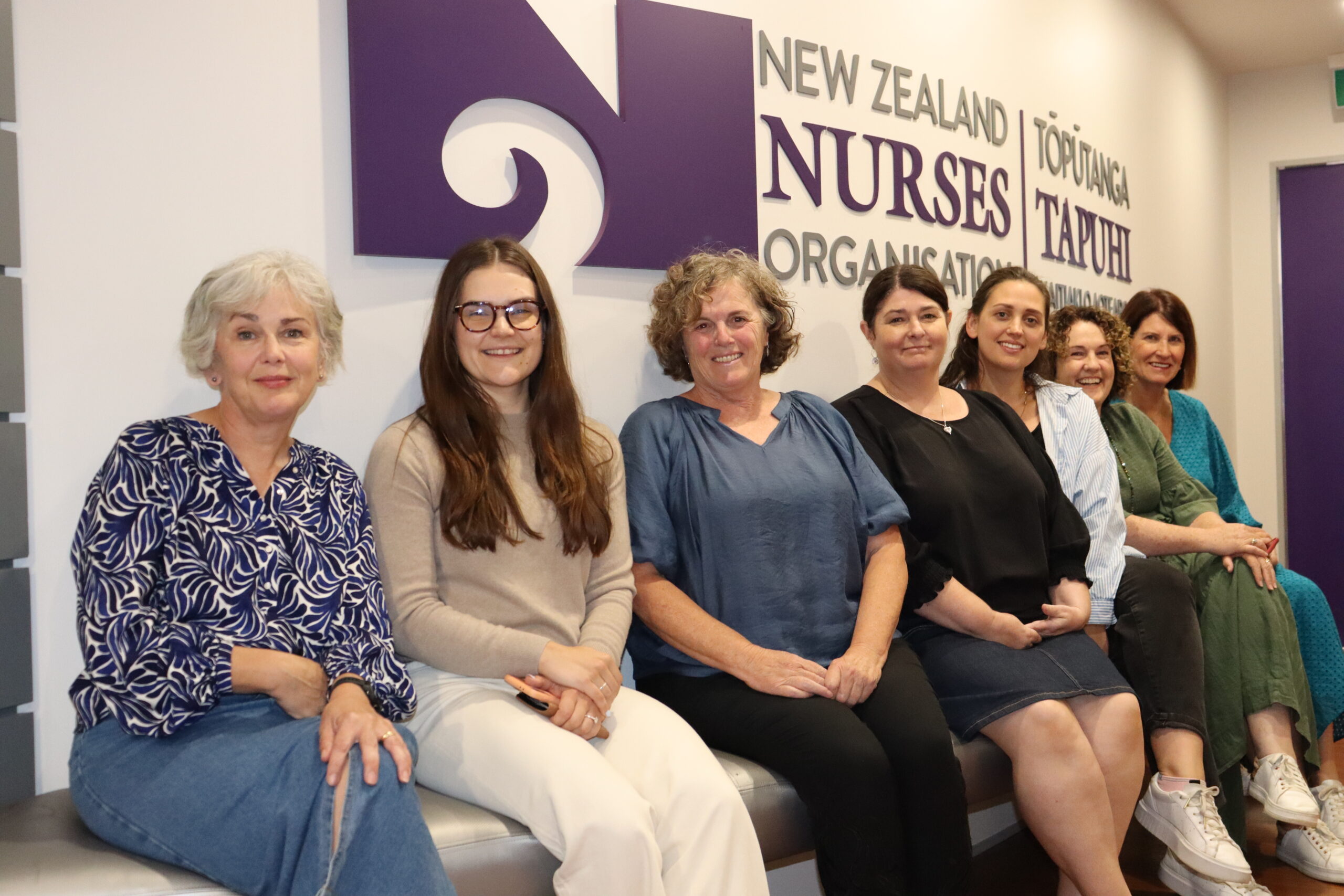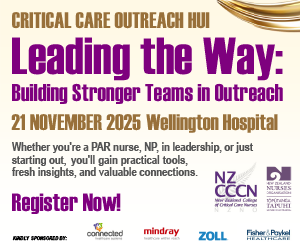Nurses are an integral part of New Zealand’s health system. We nurses pride ourselves on our ability to advocate for patients and work autonomously.
Many of us in women’s health have serious concerns about the Government’s proposed changes to health workforce regulation: Putting patients first: Modernising health workforce regulation.
Minister of Health Simeon Brown has claimed updating the 2003 Health Practitioners Competency Assurance Act would bring a more “streamlined” patients-first approach and reduce “overly bureaucratic” regulatory red tape when bringing in new roles or overseas-qualified workers.
The changes he’s proposing would allow Government to intervene in regulators’ decisions, group up to 18 health regulators together — and see essentially less regulation for new roles, such as physician associates, and other overseas-qualified health workers.
We constantly work in the grey areas of emotions, vulnerabilities and individual needs — not black and white.
Other worrying suggestions include that nursing students need only do 800, rather than 1000, hours of clinical placement, and cultural safety requirements be dumped.
In our area of work, a well-regulated nursing workforce is essential to build trust with wāhine often in extremely vulnerable positions. This requires insight, skill and training which allow safe and appropriate care and decision-making.

Proposed changes ‘risk patient safety’
Tōpūtanga Tapuhi Kaitiaki o Aotearoa — NZNO chief executive Paul Goulter has called for the “poor and flawed” proposal be withdrawn.
In a submission, NZNO said the 2003 Health Practitioners Competency Assurance Act was intended to protect patients from harmful incompetence or bad practice.
The current proposal to loosen regulation risked both patient safety and undermining regulators with political agendas, as well as dismissing cultural safety obligations “critical” to safe care for Māori.
The Nursing Council has also said any easing of health workforce regulation would risk patient safety.
Its submission said proposed health workforce deregulation would create a more expensive, bureaucratic and risky workforce regulation model which “diminishes the professionalism of a nurse”.
Greater Government oversight, as proposed, “risks the independence of decision-making” for regulators which may negatively impact public safety, said the council, which is the regulator for 85,000 nurses in New Zealand.
It also said the consultation questions were “leading, ambiguous” with no opportunity to expand on some of the more complex questions.
The Nursing Council’s other key points were:
- Cultural safety was a “fundamental component” of public safety. “It requires nurses to reflect on and understand themselves and their biases, enabling care that is culturally responsive and free from judgement.”
- A move away from profession-led regulation would likely reduce public trust and confidence in the nursing workforce.
- Merging regulators would be expensive, disruptive and bureacratic.
- The Nursing Council is fit for purpose and “agile”, registering almost 27,000 internationally-qualified nurses in the two years to December 2024.
- The current regulation model took a long-term approach, uncompromised by political electoral cycles.
The Government is also taking on health regulators through its Regulatory Standards Bill, which nurses and doctors fear will impact patient safety.
Trust also comes from good cultural competency and te Tiriti o Waitangi awareness.
Cultural safety is integral to providing safe health care in New Zealand, directly impacting on patients’ clinical outcomes and willingness to engage with health services. We cannot provide patient-centred care without whakawhanaungatanga — building relationships.
Nursing and midwifery is not as simple as completing tasks, as the proposal assumes. We constantly work in the grey areas of emotions, vulnerabilities and individual needs — not black and white.
Our renowned nurses’ and midwives’ intuition is real, crucial to women’s health and based on our knowledge and experience.
Nurses have advocacy skills based on their knowledge and critical-thinking abilities. Our renowned nurses’ and midwives’ intuition is real, crucial to women’s health and based on our knowledge and experience.
We do not believe this document offers a patient-centred model of health, as it claims. Patient safety comes from regulations — and a regulated workforce. Like nursing.
In the new proposal to “modernise” the health workforce, there are a vast number of anecdotal claims but very little robust evidence. This is deeply concerning. If the evidence for deregulating is not strong and robust, patient safety will be jeopardised.
The general consensus within current regulatory bodies, such as the nursing and medical councils, according to their submissions, is that our current regulations and processes are working well to keep patients safe.
Lack of evidence
We believe if changes are being proposed, they should be supported by robust evidence.
Yet the proposal has vast amounts of anecdotal and fictional patient scenarios. Both Tōpūtanga Tapuhi Kaitiaki o Aotearoa-NZNO and the Association of Salaried Medical Specialists (ASMS) have complained to director-general of health Audrey Sonerson that it lacked evidence and was highly misleading, politicised and obfuscating.
This suggests the proposal is driven by a constrained funding environment, rather than what is safe and patient-centred. Yet there are no projections of cost savings in the document.
We believe that disestablishing or loosening regulations would be unsafe to both patients and staff.
Determining what can and cannot be done by health workers without the oversight of a regulating body such as the Nursing Council or Medical Council, for political gain, compromises the integrity of our profession.
Ultimately, such changes to regulation would pose a serious risk to patients, potentially leading to a lack of clinical knowledge, oversight and experience.

Nor is the proposal correct in its claim that regulatory bodies do not seek public input. Our regulatory body is the Nursing Council, which has a proven record of public consultation on proposed changes to things like scope of practice, competencies and other nursing practice-related issues.
We would also go so far as to say that . . . allowing ministerial input would risk making Government priorities central to health care, rather than those of patients.
This proposal also assumes our current regulatory bodies are overly bureaucratic, again with no supporting evidence.
We believe that disestablishing or loosening regulations would be unsafe to both patients and staff. We would also go so far as to say that grouping regulatory bodies, as proposed, and allowing ministerial input would risk making Government priorities central to health care, rather than those of patients or health professionals.
We strongly believe that our regulatory bodies have the essential clinical knowledge and skill to determine what safe practice is. Undermining this would be risky for patients and staff, bring poorer patient outcomes and a rise in complaints to the health and disability commissioner.
There is plenty of evidence that more adverse events would cost the health system significantly more than providing safe care up front.
Risks of new roles
Our workforce is already under high pressure and stress, so being forced to supervise new, potentially less regulated roles with varying skills and qualifications is not a safe solution. Nurses cannot take on this responsibility.
While bringing new roles like physician associates into the health workforce might be seen as a quick and cheap fix, we believe it would risk patients, the public credibility of the health workforce and burnout for those of us already stretched yet expected to monitor them.
Diluting the workforce to include less regulated roles is not a safe or reasonable solution.
There is much robust literature that shows safe working conditions for clinicians equates to safe patient care. Diluting the workforce to include less regulated roles is not a safe or reasonable solution.
The proposal strongly focuses on overseas recruitment. Yet there are a significant number of New Zealand nurse graduates looking for jobs currently. Recently, advertised nursing roles in Wellington and Christchurch received about 100 applicants each!
— Gynaecology nurse Sarah Marshall is a member of NZNO’s women’s health college. This article is drawn from the college’s submission on proposed regulation changes with additional edits by Kaitiaki coeditors.
- Consultation ended on April 30. A Ministry of Health spokesperson told Kaitiaki it had begun analysing more than 3000 submissions received. All, including emails, would be considered as part of its advice to Minister of Health Simeon Brown. A summary would be published “in due course”. Neither the ministry nor minister’s office were able to say when a decision was expected.





